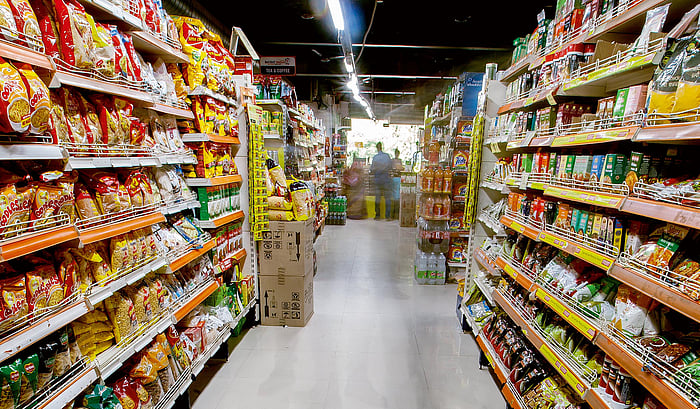India’s retail landscape is set for a transformation, with organised retail expected to reach $230 billion by 2030, growing at a 10% CAGR, as rising discretionary spending reshapes consumer behaviour. A joint report by Deloitte India and the Retailers Association of India (RAI) highlights that private consumption in India has surged to $2.1 trillion in 2024, nearly doubling from $1 trillion in 2013, making the country one of the fastest-growing consumer markets globally.
The report points to discretionary spending—spending on non-essential goods like apparel, electronics, travel and dining out—as the key driver behind this boom. Discretionary spending is expected to grow at 8.7% CAGR by 2030, outpacing overall consumption growth. As per the report, rural India is set to play a bigger role in this shift, with rural discretionary spending projected to grow faster at 9.1% CAGR, compared to 8.4% in urban areas, reflecting the narrowing income and consumption gap between rural and urban consumers.
“India’s consumer landscape is undergoing a fundamental transformation. The surge in discretionary spending, expanding digital commerce and increasing access to credit are redefining the rules of engagement for brands,” says Anand Ramanathan, partner and consumer industry leader, Deloitte India. He adds that businesses have the opportunity to tap into evolving consumer expectations by balancing affordability, convenience and sustainability while harnessing data and technology to create highly personalised experiences.
Shift from unorganised to organised retail
India’s retail market has long been dominated by unorganised retail formats like local kirana stores and traditional markets, which account for nearly 88% of the country’s $1 trillion retail market. However, the report notes a gradual but steady shift towards organised retail formats, including both brick-and-mortar stores and e-commerce platforms.
While the unorganised retail market will grow at 8% CAGR, organised brick-and-mortar retail is set to expand at 10% CAGR, reaching $230 billion by 2030. The fastest-growing segment will be online retail, projected to triple from $103 billion in 2024 to $325 billion by 2030, driven by rising internet penetration, digital payments, and the growing influence of Gen Z and millennial consumers.
“India’s discretionary spending is entering a new phase of growth, driven by rising incomes, digital adoption, and evolving consumer preferences,” says Kumar Rajagopalan, CEO, RAI. “As organised retail and new commerce models like quick commerce and social commerce expand, businesses that align with these trends will unlock immense opportunities for growth and innovation.”
Rise of digital commerce, credit access & premiumisation
A key factor accelerating the shift towards organised retail is digital commerce and rising access to credit. The report highlights that India’s credit card market is expected to triple from 102 million in 2024 to 296 million by 2030, while digital payment modes like UPI and BNPL (Buy Now, Pay Later) are enabling more consumers to purchase discretionary products.
The increased availability of credit, coupled with rising per capita income—which is projected to surpass $4,000 by 2030—is unlocking new demand across categories like fashion, consumer durables, travel, and personal care.
India’s aspirational consumers, particularly in smaller towns, are also playing a bigger role. According to the report, tier II and III cities are driving faster growth than metros, with e-commerce platforms making premium brands and products more accessible to consumers beyond urban hubs.
The report further highlights that Indian consumers are increasingly shifting towards premium products and experience-driven purchases. Categories like apparel, footwear, consumer electronics, and food services are witnessing a surge in demand for premium offerings as consumers prioritise quality, convenience, and personalised experiences.
“Consumers are seeking products and experiences that align with their aspirations and lifestyle choices,” says Ramanathan. “Brands that embrace personalisation, sustainability and omnichannel models will be best positioned to thrive.”
From try-before-you-buy augmented reality experiences in beauty and fashion to quick commerce delivery models for premium groceries, consumers are increasingly looking for more immersive and seamless shopping experiences.
Challenges
Despite the strong outlook, the report points out that India’s discretionary spending categories remain significantly underpenetrated compared to developed markets. For instance, car ownership in India stands at just 57 per 1,000 people compared to 850 in the US, while modern retail contributes only 12% of total sales, far below the 80% penetration seen in developed markets.
Source:https://www.fortuneindia.com/business-news/indias-retail-revolution-organised-sector-to-hit-230-billion-by-2030-as-discretionary-spending-surges/120871

